Discover the Art of Sculpture
I welcome you to a journey through art that goes beyond the usual, making sculpture a key way to express yourself deeply. This adventure lets you explore your creative side and bring out ideas that have been waiting. With sculpture, you can show your true self, shaping thoughts and feelings into something real. It’s a way to make what’s silent loud, giving voice to your hidden messages. Let’s start this amazing trip, where every piece you create tells a story all its own.
A man standing in front of a blue statue
Key Takeaways
- Explore sculpture as an art form of self-expression and communication
- Discover the creative potential within the tactile experiences of sculpting
- Unlock the expressive power of various materials in your artistic practice
- Learn to articulate emotions and ideas beyond words through sculpture
- Embrace the possibilities that sculpting offers to amplify creativity
Embarking on the Sculpting Adventure: Where Creativity Meets Clay
Welcome to a world powered by clay, where creativity takes on new meaning. Sculpting with clay unlocks a journey of imagination. It blends sculpture with stories you create. No matter your level, clay lets you turn visions into art.
The Timeless Allure of Working with Clay
Clay is loved by artists for its endless possibilities. It smoothly turns thoughts into art, welcoming everyone to try. Starting with clay is both flexible and calming. It not only captures your ideas but also reduces stress and uplifts your mood.
Transforming Ideas into Tactile Reality
Making a sculpture from your mind is a problem-solving adventure. It starts with shaping clay and continues through every detail. A well-equipped studio is key for a great sculpture. Seeing your thoughts take shape brings joy and pride.
Essential Tools for the Aspiring Sculptor
To bring your ideas to life, having the right tools is essential. Let’s look at the must-haves for sculptors:
| Tool Type | Use | Importance |
|---|---|---|
| Rib Tools | Shaping and smoothing | Essential for fine details |
| Wire Cutters | Slicing through clay | Crucial for precise cuts |
| Loop Tools | Carving | Important for intricate designs |
| Wooden Modeling Tools | General shaping | Versatile for various techniques |
| Sponges | Wetting and smoothing surfaces | Important for final touches |
Having the right tools makes creating fun and precise. Even the most detailed designs can be achieved with skill.
Sculpting with clay is a journey that enriches. It helps you master the craft while expanding your creativity. This leads to artworks that are not just beautiful but also deeply rewarding.
The Transformative Power of Sculpture
The impact of sculpture reaches deep into our souls. It evokes strong feelings and connects with us on a meaningful level. Take, for example, the effect of Claude Monet’s Water Lilies exhibit on people. It shows large sculptures can deeply move us and make us think in new ways. By nature, sculpture talks to us without words, crossing cultures and languages.
Sculpture grabs our hearts and minds, not just our eyes. We see this in sculptures that tell big stories of the universe. They show us how different groups tell old stories in new ways, linking the past with now. Over the last ten years, sculptures have brought more people to museums. This rise shows their importance in our culture and changing ideas about what art means.
Sculpture is a powerful way to talk. It makes us think and feel in many ways. We see this in how sculptures catch the light at different times or when they let us touch them. The link between the art, the place, and the viewer tells a special story, adding meaning to our lives.
Making sculptures by hand lets artists share big ideas or quiet thoughts. From simple pieces to huge works, sculptures change how we see the world. They make us think about who we are and what we believe.
Unveiling the Secrets of Sculpting Materials
Artists enjoy a wide range of sculpting materials today. This variety lets them find new ways to be creative. Each material has special features and uses. They help turn artistic ideas into real pieces.
Comparing Air Dry Clay and Polymer Clay
Air dry clay and polymer clay have their own strengths for artists. Air dry clay is great because it doesn’t need an oven to harden. This makes it easy for artists to shape and mold freely. It air dries naturally, making it a good choice for everyone. Polymer clay, on the other hand, requires baking. It comes in bold colors and stays strong even after baking. Artists love it for creating detailed, colorful sculptures.
The Versatility and Strength of Epoxy Clay
Epoxy clay is highly durable and sticks well, making it ideal for lasting projects. It’s known for how strong it becomes after hardening. Although it needs some care in handling because of how it cures, working with it can be very satisfying. Its strength makes it good for sculpting things that need to last and stay strong against wear and tear.
| Material | Usage | Drying/Curing Method | Color Properties |
|---|---|---|---|
| Air Dry Clay | Modeling, Sculpting | Air Dries Naturally | Generally Neutral, Paintable |
| Polymer Clay | Modeling, Detailing Fine Art | Bakes in Oven | Vibrant, Varied Colors |
| Epoxy Clay | Heavy-duty Sculpting, Outdoor Art | Cures over Time | Typically Neutral, Paintable |
These methods of sculpting offer not just creating but interacting with art, as seen in Donatello’s art. They are made fun with nicknames like “Clay Alchemist” or “Patina Picasso”. These terms make learning enjoyable and show the transformation these materials can go through.
Exploring materials like air dry, polymer, and epoxy clay opens many doors for artists. Each material allows for unique expressions in sculpture. Whether it’s the quick shaping of air dry, the rich colors of polymer, or the long-lasting epoxy, all play a special role in the art of sculpting.
Finding Your Sculpture Style
Building a unique sculpture style is more than learning techniques. It’s about finding your artistic identity. It’s a personal journey deeply affected by experimenting creatively. Every sculpture I make is a step in this journey, showing my true artistic self.
It starts with figuring out what artistically appeals to you. My search for my style lasted 60 days, with the first 30 spent defining ‘Your Thing.’ This exploration is key in creating sculptures that truly reflect my vision.
Feedback and ongoing evolution are also crucial. Accepting criticism is important, but knowing when to disregard it is too. This makes my sculptural expression unique. Remember, evolving in your style takes time and may change entirely.
- Study a dataset of up to 20 inspiring artists to gather influences.
- Join art groups, both local or online, to find an accountability partner.
- Explore and experiment with different styles, techniques, and approaches to find your voice.
It’s vital not to give in to outside pressures, like the influence of social media trends. Aim to speak with your true voice, evolving as needed. Ideas are always valuable, even as they change over time.
| Phase | Focus | Duration |
|---|---|---|
| Initial Exploration | Creating “Your Thing” | 30 days |
| Feedback Integration | Refine and Evolve | Continual |
| Deepening Practice | Technique and Style Experimentation | Lifelong |
My journey through sculpture is about balancing my own expression with helpful critique. This approach helps me improve my work and understand my artistic identity better. Thus, every piece I make truly shows who I am through sculptural expression.
Modern Art (Fruits of The Garden) in Wellington Harbour
Molding Mastery: Techniques to Shape Your Vision
Exploring sculpting mastery reveals it’s about mastering both additive and subtractive methods. You can add materials to shape your sculpture, or you can remove them to find its form. Achieving mastery in sculpting involves these fundamentals.
Introduction to Additive and Subtractive Methods
Additive methods build the sculpture by adding layer upon layer of material. This allows for changes and tweaks during the process. Subtractive sculpting, on the other hand, is about seeing the final form and removing what doesn’t belong. It requires a clear vision of the end result from the start.
Learning Through the Masters: Sculpting Workshops and Courses
Joining workshops and courses enriches sculpting skills with expert guidance. Learning directly from seasoned sculptors deepens understanding of sculpting techniques. This practical experience is invaluable.
Such educational experiences refine technical skills and the approach to various materials. They cover everything from classic stone work to the latest 3D printing methods.
To succeed in sculpture, knowing various molding methods is crucial. For complex shapes, plaster piece molds are used, able to capture fine details. Flexible molds, made of materials like gelatin or rubber, excel for detailed original pieces.
Modern materials, such as silicone for molds, offer durability over time despite some vulnerabilities. They keep up with liquid rubber as a favored material, offering better detail and strength for top-notch casts.
Artists blend old and new techniques to extend the limits of sculpture. By combining both traditional and innovative methods, they create works that speak to both timeless and modern tastes.
True sculpting mastery involves skill and a profound knowledge of materials. A thorough sculpting education, whether classic or digital, is key for growth. Aspiring sculptors should keep learning to maximize their artistic potential in the changing world of sculpture.
Artistic Inspirations: Learn from the Greats of Sculpture
I always look to the master sculptors for inspiration in my journey. They have greatly influenced our world of sculpture with their styles. By studying their work, I get insights that change how I see art. I learn to value creativity in different time periods, from the realist works of the Italian Renaissance to the abstract art of today.
I found that most artists today borrow from different genres to create something new. I draw inspiration from the Renaissance era. Artists like Michelangelo and Donatello focused on the body with precise detail. This influence is strong among students looking for inspiration from the past. I aspire to be as groundbreaking as Bernini or Calder, who redefined what art could be.
Many artists use digital tools now, mixing old techniques with new tech. This mix, seen in a fifth of all artworks, inspires me to think outside the box. I like using traditional techniques in a modern way, just like Picasso did with cubism. This approach makes my work unique and timeless.
| Artistic Epoch | Master Sculptor | Influence on Modern Sculpting |
|---|---|---|
| Renaissance | Michelangelo | Emphasis on human anatomy and emotion |
| Baroque | Bernini | Dynamic compositions and intense expressions |
| Modernism | Henry Moore | Semi-abstract forms and public engagements |
| Contemporary | Yayoi Kusama | Personal narratives interwoven with sculpture |
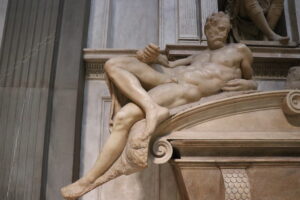
Michelangelo Sculpture in the New Sacristy
“Through the greats of the past, I see the gateway to future artistic explorations.”
My journey in sculpting is thrilling and full of learning from our history. I’m keen on learning more and letting this knowledge shape my art. Every learning moment not only hones my skills but also broadens my creative vision. I aim to add fresh ideas to the modern sculpture scene with each creation.
The Art of Display: Presenting Sculptures in Their Best Light
Presenting sculpture in an exhibition highlights artistic skill and the way art speaks to us. A carefully planned display can turn a space into an engaging story. It helps viewers understand the art’s meaning better.
Creating a Focal Point with Your Sculpture
For a strong focal point, where you put sculptures matters a lot. Placing them at eye level and in groups based on themes or eras makes them more powerful. This makes sure each piece gets noticed. Viewers can see the art’s details well from different angles, much like exploring a 3D painting.
Lighting Techniques to Enhance Texture and Form
Lighting is key to showing off a sculpture’s textures and shapes. Bad lighting angles cast ugly shadows and spoil the sculpture’s look. Soft, diffused light or spotlights are great. They highlight the sculpture’s best parts and create cool light and shadow effects.
Picking the right pedestals and where to put them is crucial. It makes sure the sculptures are safe but not in the way. Smaller statues can go on shelves. They’re easy to see and still look special.
| Feature | Benefit |
|---|---|
| Eye-level Display | Enhances viewer engagement and appreciation |
| Themed Groupings | Creates a cohesive aesthetic and historical narrative |
| Diffused Lighting | Highlights textures and forms without harsh shadows |
| Pedestal Material | Complements the artwork and blends seamlessly into the room |
Using these strategies can make sculpture displays look better and feel more involving. The right light and positions can turn sculptures into eye-catching focal points. They make people want to look and understand the art more.
Combining Mediums for Innovative Sculptural Art
The world of mixed-media sculpture shines bright for art enthusiasts. It’s all about mixing different materials to create something new. This approach changes how we see and feel sculpture. It draws in viewers with its creative fusion.
Artists can use almost anything for their sculptures, from paper to digital elements. This choice helps them connect with more people by showing varied human experiences. By mixing old (wood and stone) with new (polymer clay, and epoxy resins), they start a conversation between different eras and the natural vs. the synthetic.
Take air dry and polymer clays, for example. They make sculpting more open and colorful. This lets many more artists join in from their own living rooms. So, everyone, no matter where they are, can be part of this push for new, exciting art.
| Material | Properties | Artistic Application |
|---|---|---|
| Epoxy Clay | Strength, cures chemically | Used for durable, detailed sculptures |
| Felt and Resin | Soft texture, shapeable with hardeners | Creates unique sculptural forms and textures |
| Wire | Versatile, easily bendable | Often combined with clay or fabric for dynamic forms |
| Papier-mâché | Robust, adaptable with adhesives | Ideal for larger, lightweight sculptures |
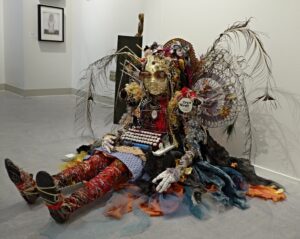 Sharon Carr, Button, Chicken wire & mixed media sculpture
Sharon Carr, Button, Chicken wire & mixed media sculpture
Digital tools are making mixed-media art even more interesting. They allow for unique creations that mix digital designs with traditional methods. This constant exploring and combining of techniques is fueling creativity in the art world. It’s all about innovation and pushing boundaries.
Mixed-media sculpture adds a fresh layer to the art scene. It challenges both viewers and artists to think differently about sculptures. This mix of materials opens new doors for expressing and understanding art in a rapidly changing world.
Networking and Marketing Your Sculptural Works
In today’s world, being a successful sculptor means mastering networking and marketing. By taking part in art networking and smartly marketing their sculptures, artists can stand out in the art world. They use online tools to show their work and make important connections for career growth.
Building an Online Portfolio to Showcase Your Creations
For sculptors, a strong online portfolio is a must. It shows off their talent and grabs the attention of people worldwide. This digital platform can lead to new opportunities and connects artists with those who appreciate their work. It’s a great way to get noticed and possibly, find new projects.
Engaging with Art Communities and Collectors
Being active in online art communities is key for success. Platforms like Instagram and Facebook allow sculptors to reach a wider audience and connect with potential buyers. Art fairs and shows are also important, enabling artists to present their work in person. This can lead to direct sales and provide valuable feedback, making each sculpture’s story known.
Galleries can boost an artist’s trustworthiness and help them be seen by more people. Teaming up with other artists or institutions brings new eyes to their work. It helps enrich the artist’s standing and prepares them for mutual projects.
Having a strong online presence is a must in today’s art scene. A good marketing plan, including SEO and active social media use, can keep artists in the spotlight.
Finally, connecting with collectors personally can greatly benefit a sculptor. Art that speaks to the heart is more likely to be collected. This not only builds an artist’s reputation but also increases their sales.
Both online and offline methods can help sculptors not only share their work but also build solid relationships within the art and business worlds. This way, they can advance their careers and find success.
Conclusion
Our journey through sculpture’s world shows how human creativity knows no bounds. The way we turn materials into art tells our story through different shapes and textures. It’s amazing to see how just 54 bricks can hold so many stories.
Sculptures need to be more than just looked at; they should be felt. When shown in public, like Richard Serra’s big works, or in a gallery, the way people react becomes a part of the art. This makes viewing art a personal experience.
I’ve learned that sculpture is about more than making something beautiful. It’s about sharing emotions and connecting with others through art. Artists break boundaries and create masterpieces that last, leaving us in awe.
FAQ
What is the emotional impact of engaging with sculpture as an art form?
Sculptures are more than shapes; they can make us feel joy, sadness, or contemplation. They bring memories to mind and make us think deeply. By touching a sculpture, an artist’s message can be felt directly, creating a strong link with the audience.
Can sculpture be a form of self-expression for those without a formal art background?
Sure thing. Sculpture is an open pathway for all to dive into their creative selves. You don’t need extensive training to start molding and shaping ideas into art. It’s a way for anyone to share their thoughts visually.
What are the main differences between sculpting with air dry clay and polymer clay?
Air dry clay is easy to handle and doesn’t need firing, perfect for novices and home studios. On the flip side, polymer clay has to be baked but offers bold colors and fine detail capabilities.
How do additive and subtractive methods differ in sculpture?
Additive sculpture means adding material to build the sculpture. Subtractive sculpture is about carving away stone or wood. Each method demands its own skill but aims for the same creative result.
In what ways can artists learn from the greats of sculpture?
Studying master sculptors helps artists grasp key elements like composition and technique. It also encourages them to evolve their style by building on past and contemporary sculpting practices.
What role does lighting play in presenting a sculpture?
The way sculptures are lit can change how we view them. Proper lighting highlights the texture and shape, setting the right mood. It influences our perception and understanding of the artwork.
How do artists develop a unique sculpture style?
Building a unique style comes through experimentation and personal introspection. Artists mix varied elements, exploring their own stories. This process helps them stand out with a style that is their own.
What is mixed-media sculpture and its significance in the art world?
Mixed-media sculpture mixes usual mediums with things like wire and found objects. This approach pushes boundaries and adds depth to creative expression. It’s valued for its ability to tell diverse and unique stories.
Why is networking and marketing important for sculptors today?
For sculptors, sharing their work and ideas is key to growth. Networking with others and marketing their art builds connections. This can lead to more opportunities and success in the competitive art scene.
How can engaging with sculpture help individuals unlock their creative potential?
Getting hands-on with sculpture turns creative ideas into tangible art. Learning various sculpting techniques and materials can uncover hidden talent and promote self-expression.
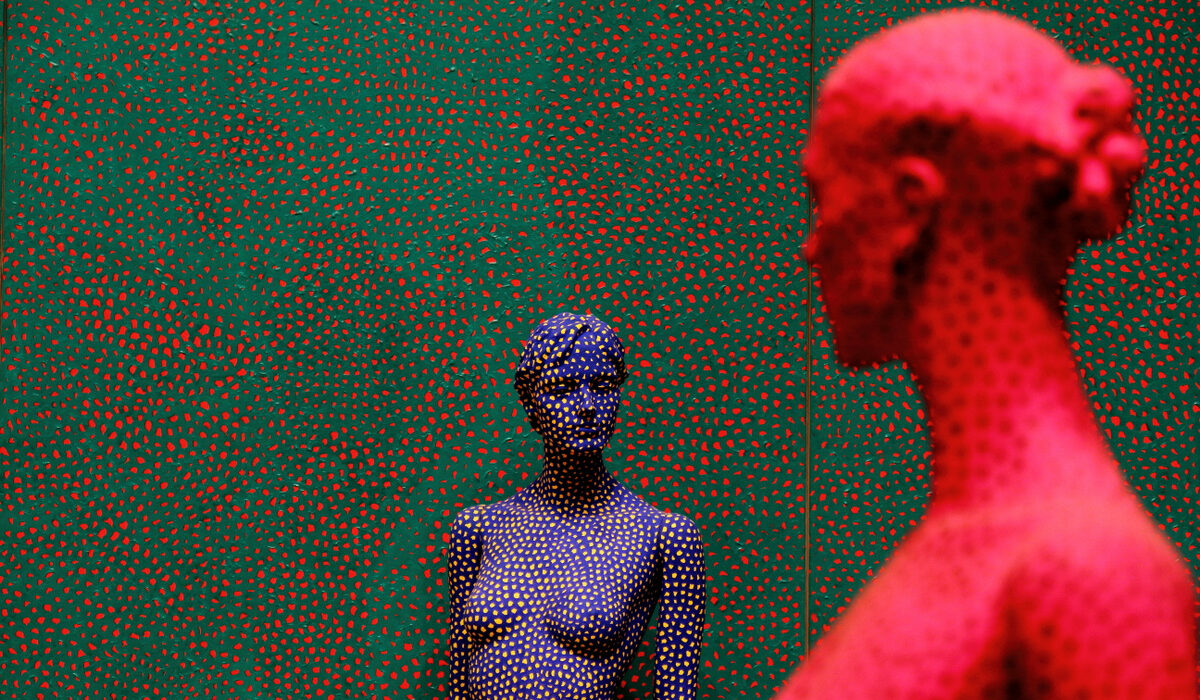
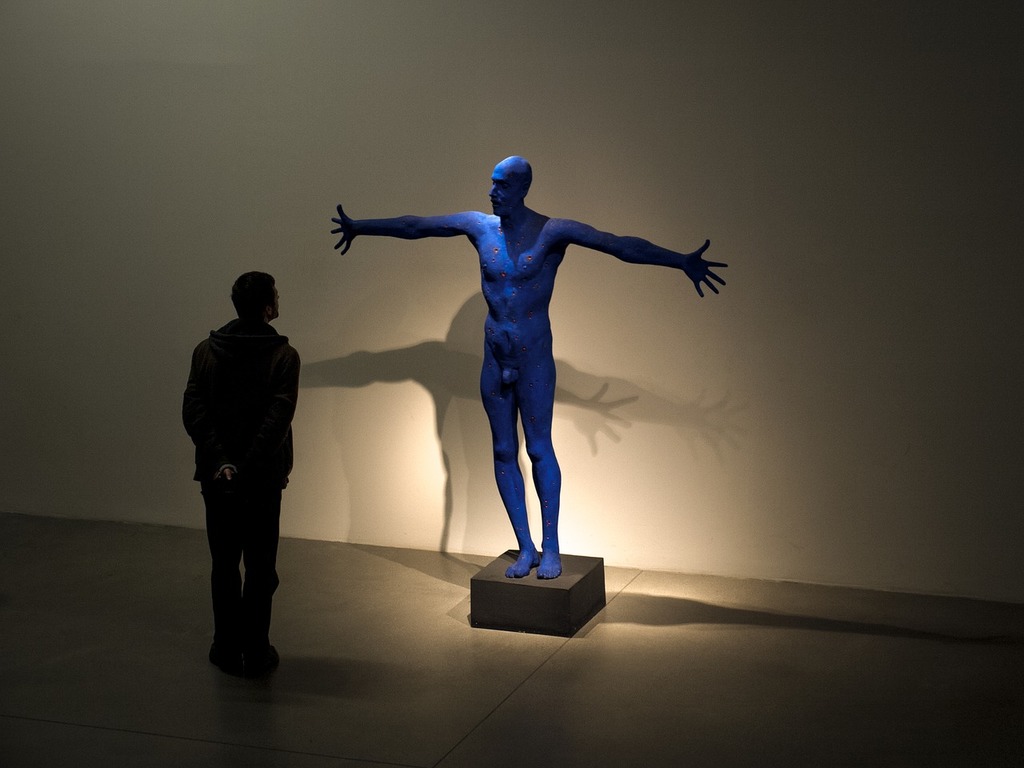

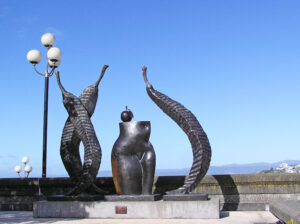
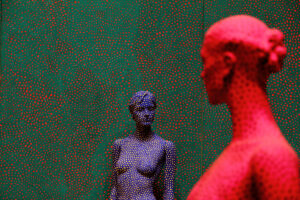
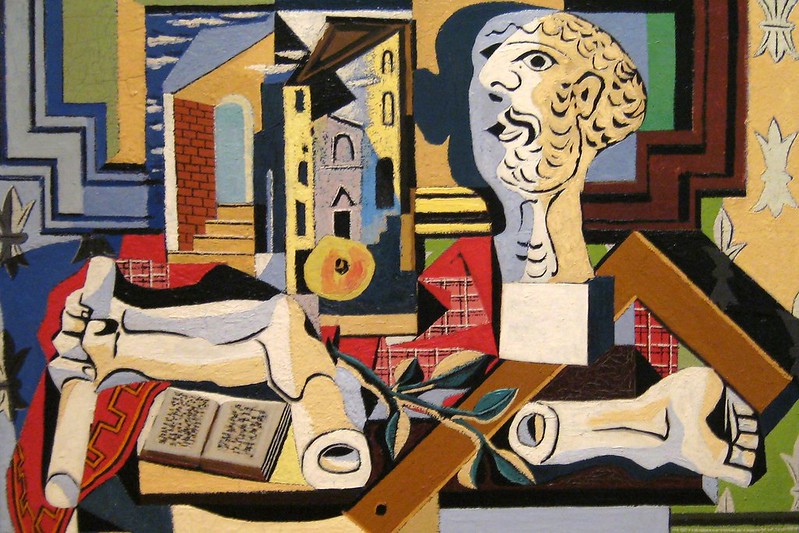
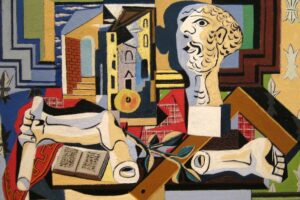
 The Persistence of Memory (1931) by Salvador Dali –
The Persistence of Memory (1931) by Salvador Dali – 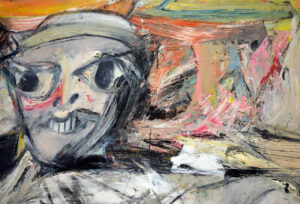 Willem De Kooning, Woman I, 1950-52 (detail)
Willem De Kooning, Woman I, 1950-52 (detail)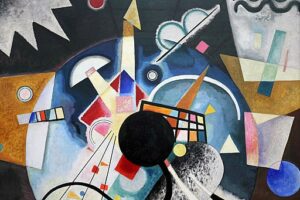
 Trend
Trend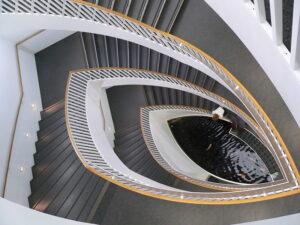 Staircase at Chicago’s Museum of Contemporary Art
Staircase at Chicago’s Museum of Contemporary Art KAWS at the Modern Museum, Fort Worth
KAWS at the Modern Museum, Fort Worth